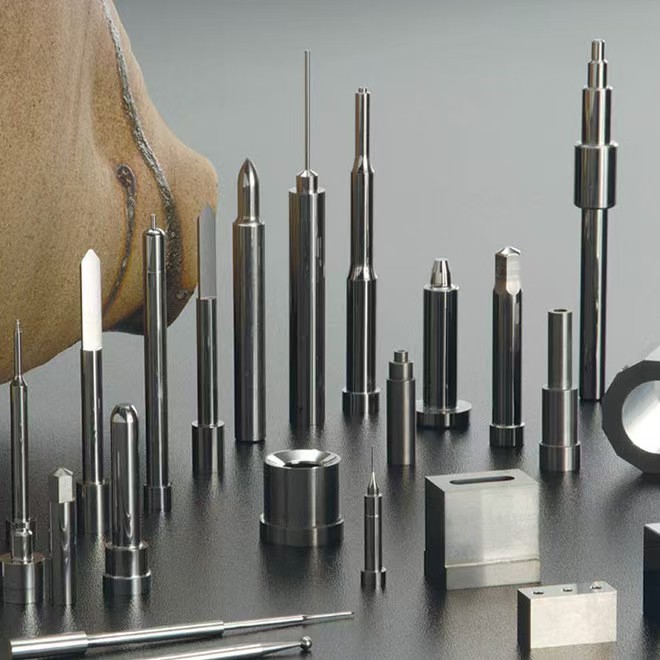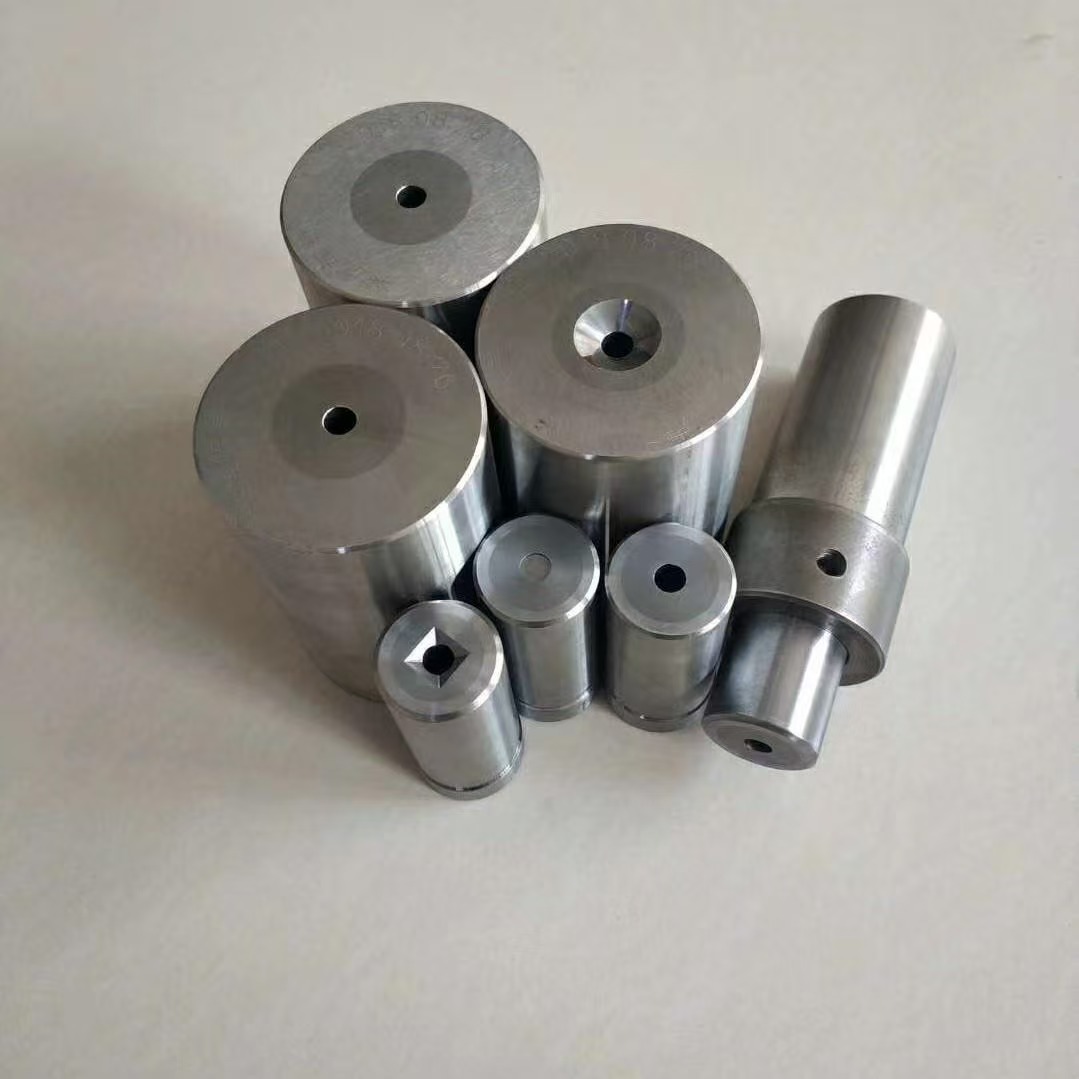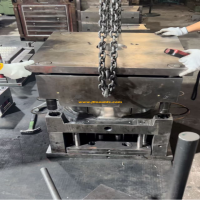Bahagian acuan standard
Bahagian acuan standard
1 bingkai acuan
Perhimpunan asas atau komponen acuan standard yang disesuaikan memberikan kemudahan yang besar untuk pengeluar acuan. Pangkalan acuan standard terdiri daripada acuan separuh bawah dan acuan separuh atas yang dilengkapi dengan pin panduan.
Pada hari -hari awal, kombinasi templat hanya termasuk pin panduan plat ejektor dan pin panduan sampingan acuan tetap. Pada masa kini, pangkalan acuan lengkap boleh dibeli.
Pengeluar acuankini boleh memberi tumpuan kepada pembuatan komponen acuan, seperti rongga. Bahagian standard telah mengurangkan pelbagai pemprosesan kedalaman dan masa pemprosesan dalam pembuatan acuan.
Pada masa kini, bingkai formwork standard saiz yang berbeza boleh didapati untuk pembelian, dengan dimensi sehingga 796mmx996mm, dan ketebalan formwork berbeza dari 10 hingga 196mm. Kualiti keluli juga boleh dipilih.
Semua permukaan setiap templat adalah tanah, dengan paralelisme permukaan mencapai 0.008/100mm dan toleransi ketebalan dari +0.05 hingga 0.25mm. Dengan konfigurasi sedemikian, pengeluar acuan tidak perlu memproses semula templat. Templat pelbagai saiz semuanya dilengkapi dengan komponen panduan yang diperlukan, seperti jawatan panduan, lengan panduan dan lengan baju.
Pelbagai siri pelari panas dan muncung, termasuk litar kawalan cair dan suhu, telah memperkayakan pelbagai bahagian standard.

Kereta Mould_Taizhou Jiefeng acuan co, Ltd. (jfmoulds.com)
2. Komponen membimbing acuan
Untuk mengelakkan sisipan dan teras di dalam acuan daripada rosak semasa penutupan acuan, komponen membimbing acuan perlu digunakan. Untuk acuan kecil dan ringan, pin panduan dan lengan panduan biasanya digunakan.
Semua komponen membimbing acuan perlu dikeraskan. Sebaik sahaja mereka dipakai, mereka boleh diganti. Untuk mengelakkan bahagian plastik daripada tercemar oleh gris, komponen panduan biasanya beroperasi tanpa minyak pelincir. Pengeluar bahagian standard boleh menyediakan lengan panduan pelinciran diri dan penyelenggaraan bebas, dengan itu menghapuskan keperluan minyak atau gris. Komponen panduan boleh digunakan di bawah keadaan di mana suhu acuan dapat mencapai sehingga 200 ° C.
Bergantung pada keperluan penggunaan yang berbeza, unit kedudukan pusat atau persegi pusat boleh digunakan. Komponen kedudukan pusat khas boleh menghapuskan daya yang tidak seimbang pada komponen panduan semasa penutupan acuan dan mencapai ketat ketat yang tinggi.
Untuk acuan bersaiz sederhana dan besar, adalah disyorkan untuk memberikan sokongan untuk acuan melalui mesin pencetakan suntikan. Dengan blok sokongan, acuan boleh disokong oleh lajur hijau mesin pencetakan suntikan atau slaid di sepanjang landasan panduan templat mesin.
3 Komponen Demolding
Komponen demolding termasuk pin ejektor, teras teleskopik, slider, blok pengikat dan pelbagai bentuk kunci kelebihan.
Pin ejektor hendaklah dipilih dengan diameter yang lebih besar dan mampu menyediakan daya demolding yang mencukupi untuk produk tersebut. Tujahan pin ejektor mestilah lebih besar daripada lekatan antara produk dan rongga. Sekiranya lekatan terlalu besar, ubah bentuk atau kerosakan bahagian yang dibentuk suntikan sering berlaku semasa demolding. Kedudukan di mana pin ejektor diatur harus mengelakkan daya demolding yang bertindak hanya pada lilitan bahagian suntikan yang dibentuk.
Teras teleskopik
Untuk bahagian -bahagian demolding dengan upturns dalaman atau benang dalaman, teras teleskopik harus digunakan. Teras -teras ini telah dikeraskan, dan kecuali bahagian -bahagian yang diulurkan yang perlu diproses, bahagian lain boleh dipasang pada bila -bila masa.
Slider, tahan blok pemasangan dengan ketat
Demolding terbalik luaran biasanya bergantung pada komponen yang bergerak secara lateral, termasuk slider, blok pengapit dan penarik teras silinder.
Dalam acuan dengan pelbagai permukaan perpisahan, kunci kelebihan diperlukan untuk membuka permukaan perpisahan sekunder.
4 aksesori penyejukan acuan
Untuk mencapai penyejukan acuan yang berkesan, beberapa aksesori standard yang berkaitan boleh digunakan. Seperti air cepat, sendi paip minyak, teras pengangkut haba, elemen lencongan dan teras berulir.
Penyambung cepat
Standard parts manufacturers can provide a complete range of water/oil quick couplings. The most commonly used diameters are 9mm, 13mm and 19mm. The diameter of the fine and small core can even reach 5mm.
Quick couplings can be equipped with control valves or not. The characteristic of a valveless system is that the pressure drop in the cooling water channel is very small, while in a valveless system, the cooling medium will not be lost when the joint is loosened, and it can prevent corrosion caused by oxygen infiltration.
Threaded core
The threaded core is precisely fitted into the inner hole of the core, allowing the cooling medium to flow smoothly along the inner wall and ensuring good heat transfer. There are two types of threaded cores: single-ended and double-ended. In a single-ended threaded core, the cooling medium is introduced through a hole in the core and then flows back along the threaded ring. And the double-ended threaded core is composed of.
The cooling medium is introduced through the first helical channel and discharged through the second helical channel.

Komoditi Mould_Taizhou Jiefeng acuan co, Ltd. (jfmoulds.com)
5. Quick mold changing system
The quick mold changing system not only enables rapid clamping of molds but also enables quick connection of all necessary equipment.
When changing molds, the time required for mold clamping is actually very short. The most time-consuming parts are the coupling of the machine's ejection mechanism, the connection of the cooling water circuit, the connection of the limit switch and the mold heating system, as well as the connection between the hydraulic core-pulling and the machine. And all these elements are indispensable parts of an excellent mold changing system.
Only 0.5% of injection molding companies can find fully automatic solutions. The cost of semi-automated mold changing is also relatively low. Many semi-automated components are provided by standard parts suppliers.
The steps of semi-automated mold changing include:
(1) Use mechanical, hydraulic clamping components or magnetic locking templates.
(2) Quick couplings using cooling water and hydraulic oil.
(3) Quick couplings for the ejection system.
(4) System plug-in device for hot runner and limit switch.
The following practices have been proven effective:
(1) The connection of the cooling medium is accomplished by the water collection block fixed on the machine template.
(2) The connection points of the cooling water pipes should be marked with colors for inflow and outflow.
(3) The junction box should be installed on the mold to avoid incorrect connection.
6-side lock mechanism
The edge lock mechanism realizes the mechanical movement of the template during the mold opening action.
Providing additional travel for the template or fixing the position for removing the template is a task that the edge lock mechanism needs to complete. When opening the mold, the side lock can open an additional parting surface. During the mold opening movement, the side lock pulls the demolding back through the mechanical inclined wedge until the demolding stops moving, while the mold will continue to move. The side lock does not require any electrical components for control and is locked entirely by mechanical structure. Edge locks are very commonly used, and standard parts suppliers can provide various types of products.
Heating plates for thermosetting plastics and elastomers
In the processing of thermosetting plastics or elastomers, injection molding machines are often equipped with heating plates. The advantage is that the mold temperature can be raised without installing heating components on each set of molds.
The heating plate is usually installed on the fixed template or ejection plate of the injection molding machine, and it is equipped with heating elements and sensors for temperature control. Heating plates equipped with heating sleeves or heating coils can be set to different temperatures to meet the heating requirements of various molds.
The thermal output power of the heating plate is 5000 to 7000 watts. But they are not omnipotent and are only suitable for simple and flat products. For products with a large height difference, due to the excessive temperature difference inside the mold, the heating plate is not very suitable. In this case, it is best for the mold to be equipped with an independent heating device.
If the positions of the heating elements and temperature sensors are arranged reasonably, the temperature on the mold surface can be effectively controlled. The temperature difference on all surfaces of the mold should be within ± 5℃. In this way, the hardness of the injection molded parts is uniform, and at the same time, the occurrence of internal stress and warpage can be prevented.
8. Demolding brush for elastomers
Most elastomer products are soft but unstable. They cannot be ejected with normal ejection components. These products must be removed by hand with a brush or by a mechanical hand system.
The brush removal unit drives the rotating brush to brush over the mold surface, and the product is brushed out of the cavity as the brush rolls in the reverse direction. This kind of institution is a variant of the pushout institution. With this brush, the flash, injection system and runner of the product are simultaneously brushed out of the mold cavity. Brushes are also frequently used to ensure that there is no product or runner residue.
Residue remains on the ejection side or injection molding side.
Brushes are usually made of natural bristles such as fur or rubber strips and need to withstand a temperature of 250℃. Not all materials are suitable.
The diameter of the brush can be changed by replacing the brush head. This brushing unit can also be adjusted to perform strong brushing or gentle brushing.
To ensure 100% cleanliness of the mold, an image monitoring system can be used. This system can detect whether the gate or product is stuck, thereby initiating the second or third cleaning.
Maklumat Berkaitan
Acuan suntikan: "pencipta tidak kelihatan" di bengkel
2025-07-09
Acuan suntikan: "pencipta tidak kelihatan" di workshopI. Kesan pertama th...
Struktur, bahan dan reka bentuk acuan suntikan
2025-07-18
Struktur, bahan dan reka bentuk acuan suntikan dalam landskap yang luas...
Koleksi proses pembuatan acuan, piawaian, proses dan kes.
2025-06-19
Carta aliran proses adalah seperti berikut: Semua jenis alat dan produk yang digunakan dalam OU ...
Meneroka acuan suntikan: asas ketepatan pembuatan perindustrian
2025-07-11
Meneroka acuan suntikan: asas ketepatan pembuatan industri...
Acuan suntikan: asas pembuatan ketepatan dan trend baru dalam pembangunan industri
2025-07-08
Acuan suntikan: asas pembuatan ketepatan dan trend baru dalam...
Reka bentuk acuan khas
2025-07-24
Reka bentuk acuan khas1 disusun acuan yang disusun serentak menghasilkan suntikan ...





